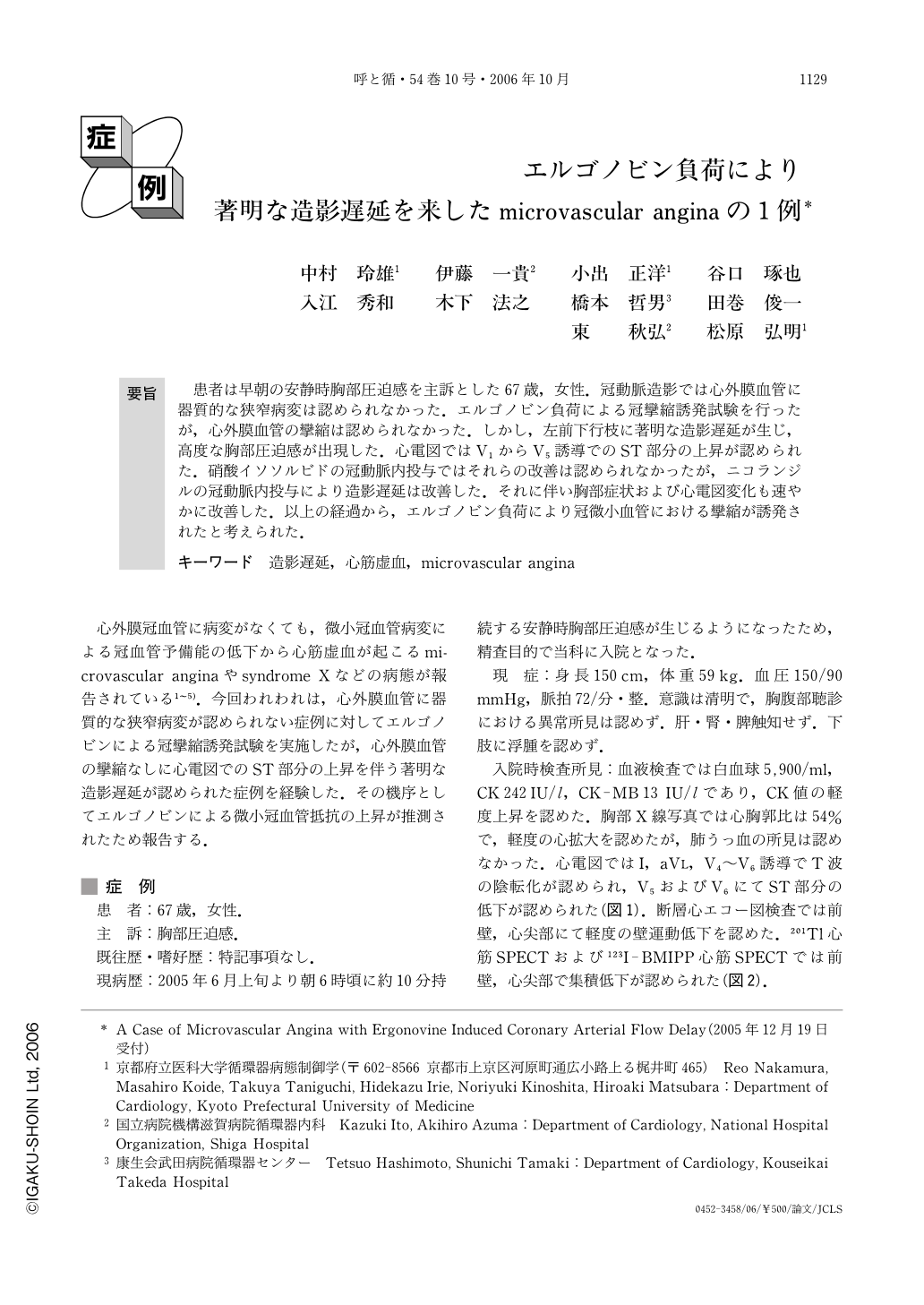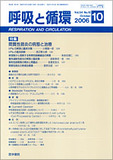Japanese
English
- 有料閲覧
- Abstract 文献概要
- 1ページ目 Look Inside
- 参考文献 Reference
要旨
患者は早朝の安静時胸部圧迫感を主訴とした67歳,女性.冠動脈造影では心外膜血管に器質的な狭窄病変は認められなかった.エルゴノビン負荷による冠攣縮誘発試験を行ったが,心外膜血管の攣縮は認められなかった.しかし,左前下行枝に著明な造影遅延が生じ,高度な胸部圧迫感が出現した.心電図ではV1からV5誘導でのST部分の上昇が認められた.硝酸イソソルビドの冠動脈内投与ではそれらの改善は認められなかったが,ニコランジルの冠動脈内投与により造影遅延は改善した.それに伴い胸部症状および心電図変化も速やかに改善した.以上の経過から,エルゴノビン負荷により冠微小血管における攣縮が誘発されたと考えられた.
The patient was a 67-year-old woman with angina chest pain, at rest. On admission, the electrocardiogram demonstrated ST-segment depression in V5 and V6, and negative T wave in I, aVL and V4-6. 201Tl and 123I-BMIPP myocardial SPECT showed reduced uptake in the apex, and anterior wall. Coronary angiography showed no organic stenosis of epicardial coronary arteries. Immediately after the intracoronary infusion of ergonovine, coronary angiography revealed severely delayed filling of contrast medium without epicardial coronary artery spasm. Severe chest oppression appeared and the electrocardiogram showed ST segment elevation in V1-5. After intracoronary infusion of nicorandil, coronary arterial flows were normalized, chest symptoms disappeared, and electrocardiographic changes improved. These findings suggest that myocardial ischemia in this case might be explained as having been caused by microvascular spasm.

Copyright © 2006, Igaku-Shoin Ltd. All rights reserved.


